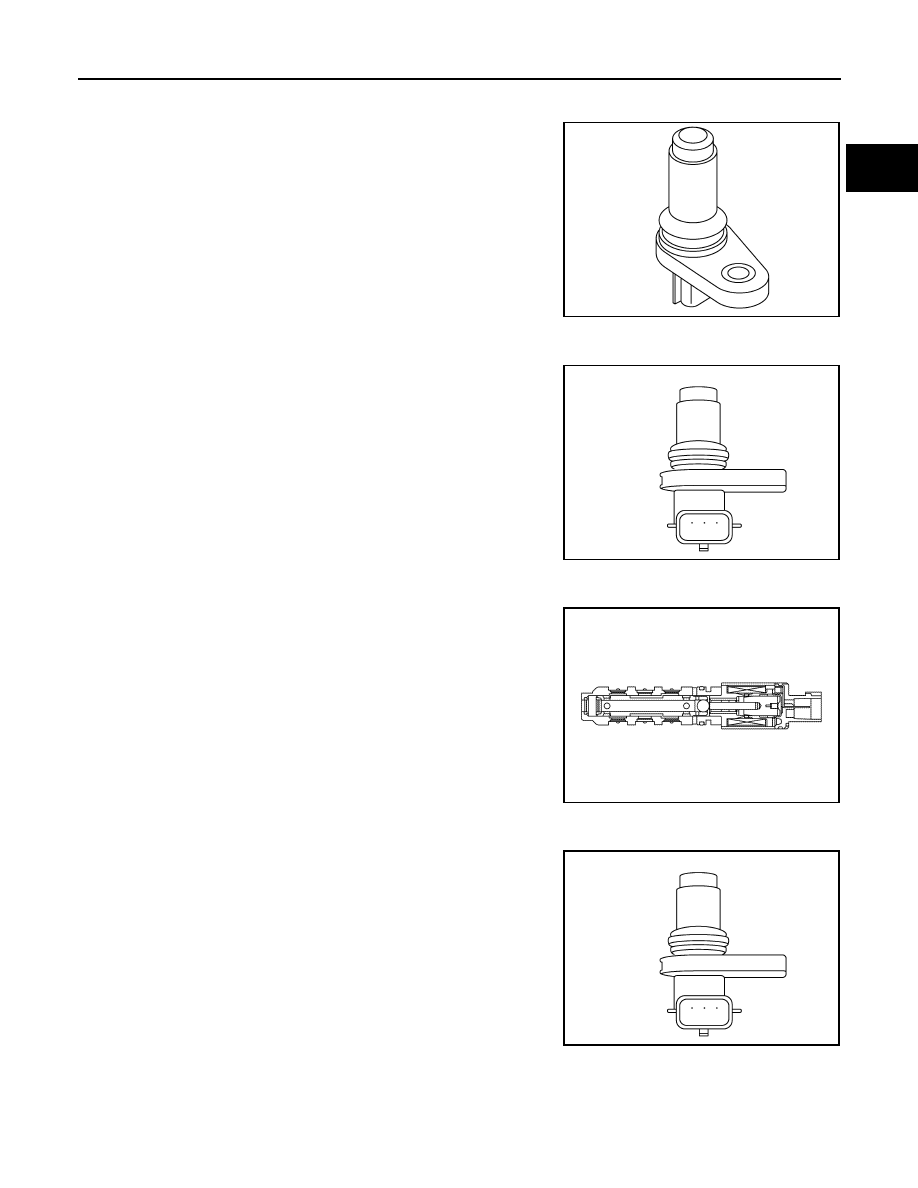содержание .. 725 726 727 728 ..
Nissan X-Trail 32. Manual - part 727

COMPONENT PARTS
EC-37
< SYSTEM DESCRIPTION >
[MR20DD]
C
D
E
F
G
H
I
J
K
L
M
A
EC
N
P
O
Crankshaft Position Sensor
INFOID:0000000010775014
The crankshaft position sensor (POS) is located on the Cylinder
block rear end. It detects the fluctuation of the engine revolution.
The sensor consists of a permanent magnet and Hall IC. When the
engine is running, the high and low parts of the teeth cause the gap
with the sensor to change. The changing gap causes the magnetic
field near the sensor to change. Due to the changing magnetic field,
the voltage from the sensor changes. The ECM receives the voltage
signal and detects the fluctuation of the engine revolution.
Camshaft Position Sensor
INFOID:0000000010775015
The camshaft position sensor (PHASE) senses the retraction of
intake camshaft to identify a particular cylinder. The camshaft posi-
tion sensor (PHASE) senses the piston position.
When the crankshaft position sensor (POS) system becomes inoper-
ative, the camshaft position sensor (PHASE) provides various con-
trols of engine parts instead, utilizing timing of cylinder identification
signals. The sensor consists of a permanent magnet and Hall IC.
When engine is running, the high and low parts of the teeth cause
the gap with the sensor to change. The changing gap causes the
magnetic field near the sensor to change. Due to the changing mag-
netic field, the voltage from the sensor changes.
Intake Valve Timing Control Solenoid Valve
INFOID:0000000010775016
Intake valve timing control solenoid valve is activated by ON/OFF
pulse duty (ratio) signals from the ECM.
The intake valve timing control solenoid valve changes the oil
amount and direction of flow through intake valve timing control unit
or stops oil flow.
The longer pulse width advances valve angle.
The shorter pulse width retards valve angle.
When ON and OFF pulse widths become equal, the solenoid valve
stops oil pressure flow to fix the intake valve angle at the control
position.
Exhaust Valve Timing Control Position Sensor
INFOID:0000000010775017
Exhaust valve timing control position sensor detects the protrusion of
the signal plate installed to the exhaust camshaft rear end.
This sensor signal is used for sensing a position of the exhaust cam-
shaft.
The sensor consists of a permanent magnet and Hall IC.
When engine is running, the high and low parts of the teeth cause
the gap with the sensor to change.
The changing gap causes the magnetic field near the sensor to
change.
Due to the changing magnetic field, the voltage from the sensor
changes.
JMBIA0062ZZ
JMBIA0064ZZ
JPBIA5281ZZ
JMBIA0064ZZ